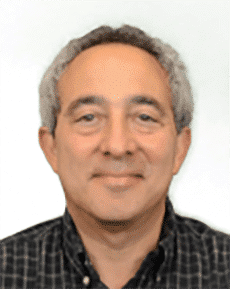Biography
David E. Root received B.S. degrees in physics and mathematics, and, in 1986, the Ph.D. degree in physics, all from MIT. He is presently Kesight Research Fellow at Keysight Technologies (formerly Hewlett-Packard and Agilent Technologies) in Santa Rosa, CA. His current responsibilities include nonlinear device and behavioral modeling, large-signal simulation, and nonlinear measurements. Dr. Root is well-known as a pioneer of measurement-based nonlinear device and behavioral modeling. He was elevated to IEEE Fellow in 2002 for “contributions to nonlinear modeling of active semiconductor devices.” He was selected as an IEEE MTT-S Distinguished Microwave Lecturer from 2006-2008, and is a member of the MTT-S Speakers Bureau. Dr. Root is a reviewer for the IEEE MTT-S Transactions on Microwave Theory and Techniques and other technical journals and international conferences in the field. He is Past Chair of the IEEE MTT-1 Working Committee on Computer-Aided Design. Dr. Root has well over 100 peer-reviewed technical publications. He is a co-author of the book X-parameters, Cambridge University Press, 2013, and co-author and co-editor of Nonlinear Transistor Model Parameter Extraction Techniques, Cambridge University Press, 2012, and Fundamentals of Nonlinear Behavioral Modeling for RF and Microwave Design, Artech House, 2005.
Presentations
Nonlinear Analog Behavioral Modeling of Microwave Devices and Circuits
This lecture introduces general concepts and specific modern techniques for effective (efficient, general, and accurate) nonlinear behavioral modeling of microwave semiconductor devices and functional circuit blocks. A behavioral model is a simplified but accurate model of a lower-level component that simulates efficiently at the next higher level of abstraction. A distinguishing feature of this presentation is the generation of behavioral models from real large-signal measurements with novel nonlinear vector network analyzer (NVNA) instruments, and also from simulations starting from detailed (complex) circuit models. The emphasis is placed on the combination of nonlinearity and dynamics. Nonlinearity includes harmonic and inter-modulation distortion, clipping, etc. Dynamics includes frequency-dependence and long-term memory effects from a variety of physical origins. In the realm of dynamic nonlinearities, insight from linear analysis cannot always be applied. Superposition is not generally valid, the Fourier domain is less useful, and Green functions don’t exist. No fully general or overarching theories of nonlinear dynamical systems exist that are comparable to what exists for linear systems. Nevertheless, great progress has been made recently in nonlinear behavioral modeling. In fact, this lecture suggests we are at the threshold for full interoperability of large-signal measurement systems, modeling approaches, and simulation algorithms for nonlinear hierarchical behavioral modeling. This means we can begin to do for driven nonlinear microwave systems what small-signal S-parameters enable for linear systems.
Modeling techniques in the time domain (phase-space reconstruction and dynamic neural networks), frequency domain (X-parameters), and envelope domain (envelope differential equations and dynamic memory extensions of X-parameters) are presented. The respective models are expressed in the mathematical language native to the simulation techniques that most effectively solve specific classes of problems. These techniques enable modeling and measurements to finally catch up with the simulation techniques of harmonic balance and circuit envelope analysis that have changed the practice of microwave and RF design over the past 25 years.
X-Parameters: the new paradigm for interoperable measurement, modeling, and simulation of nonlinear microwave and RF components
X-parameters are the rigorous supersets of S-parameters that are applicable to linear and nonlinear components alike, and valid under small and large-signal conditions. X-parameters unify linear S-parameters, load-pull (scalar and time-domain) measurements on amplifiers, multi-port nonlinear measurements for frequency translation devices, and advanced calibrated nonlinear waveform measurements in a consistent, rigorous, scalable formalism. X-parameters provide a powerful and eminently practical set of solutions to a wide range of problems and therefore have the potential to revolutionize the characterization, modeling, and design of nonlinear microwave components and systems. X-parameters enable the hierarchical design of chains of nonlinear components under large-signal drive, such as multi-stage power amplifiers, multi-chip RF modules, and RF systems. They can be used to reconstruct the time-domain waveforms (even under very large compression), and estimate nonlinear figures of merit (FOM) such as IP3 and ACPR. With complete IP protection, X-parameters provide the currency of exchange between nonlinear component providers and system integrators, mediating interactions between adjacent levels in the active component hierarchy from the transistor level to RF subsystem. They enable significant design efficiencies by providing high-fidelity accuracy with significant simulation speed-up.
This talk presents the basic concepts of X-parameters, how they are measured by a nonlinear vector network analyzer (NVNA), generated from complicated schematics (detailed models) in circuit simulators, and how they can be immediately used by a new component in simulators for nonlinear design. Several representative examples applying X-parameters to real problems are provided, including independent experimental validation, to demonstrate their utility and value as the methodology of choice for nonlinear RF and microwave applications. Recent extensions of X-parameter measurement, modeling, and simulation technology to long-term dynamic memory identification are also presented.
